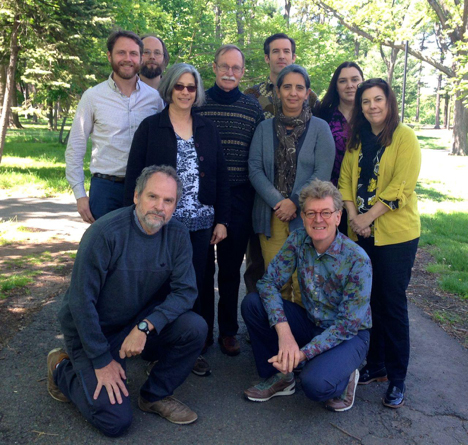Forest Transitions Throughout the Ages: Recent Forest Transitions are often Actively Planned and Rapidly Implemented
Rudel, T. K., P. Meyfroidt, R. Chazdon, F. Bongers, S. Sloan, H. R. Grau, T. Van Holt, and L. Schneider. 2019. Whither the forest transition? Climate change, policy responses, and redistributed forests in the twenty-first century. Ambio https://doi.org/10.1007/s13280-018-01143-0.
Why do forests disappear and later reappear in landscapes, regions, and nations? The Forest Transition Theory focuses on revealing the patterns and drivers of a switch from net deforestation to net reforestation in a region or nation. In this paper, an interdisciplinary group of ecologists and geographers provide a historical overview of forest transitions throughout the last few centuries, contrasting their driving forces, spatial extents, speed, and features of the new forests they produced. In particular, early cases (1800-1980) are contrasted with ‘latecomer’ cases (since 1980).
Historical and recent forest transitions share some commonalities: tree cover is redistributed both among and within nations from lowland flat terrain to upland hilly terrain. Deforestation and reforestation trends have become increasingly influenced by the globalization of agricultural commodities and intensification of agriculture. Global trends show net reforestation in industrialized and temperate zone nations, while tropical countries continue to lose forests, from 1982-2016.
Early forest transitions in Europe and North America mostly occurred passively through spontaneous regeneration of native forests on abandoned agricultural land, coincident with the expansion of large-scale, machine-cultivated agriculture on inexpensive, fertile, level land that became accessible. Small-scale upland farmers in Europe had difficulty making a living from agriculture; many abandoned their homesteads and moved to cities to work in new industries.

Photo of workshop participants: From left; kneeling: Ricardo Grau, Frans Bongers; first row: Robin Chazdon, Laura Schneider, Pam McElwee; Second row: John Zinda, Thomas Rudel, Tracy Van Holt; Back row: Patrick Meyfroidt, Sean Sloan.
Recent Asian forest transitions show features of latecomer transitions: planned forest expansion, reforms initiated by central governments or a centralized campaign, and reliance on tree planting, a form of reforestation that governments could control and govern. These attributes produced, relatively rapid transitions from forest loss to forest gain in South and East Asia. More recently, climate change mitigation and watershed management have become powerful motivators for state-led, intentional forest expansion and NGO-based restoration programs. These motivations have favored low diversity tree plantations (often of exotic species) over natural forest regeneration in large-scale, state-sponsored reforestation programs.
What lies ahead for forest transitions? Shifts in control of forest resources from centralized governments to local communities raises the potential for using reforestation to accomplish multiple socio-environmental functions, including biodiversity conservation, enhancing forest-based livelihoods through agroforestry and assisted regeneration of forests, and participatory management and monitoring.
The PARTNERS connection
This paper is a product of a PARTNERS Workshop on New Tendencies in Forest Transitions co-organized by Tom Rudel and Sean Sloan at Rutgers University in May 2017.



